The late Richard Hamilton is feted across London in a trio of exhibitions

Unless you have been hiding under a stone this week, you cannot have failed to notice how British artist Richard Hamilton has launched a posthumous takeover of London. Today, a major retrospective of the late Pop Artist’s work opens at Tate Modern; yesterday, the Institute of Contemporary Arts unveiled two installations originally created by Hamilton in the 1950s, and tonight, his lifelong forays into printmaking are honoured at the Mayfair gallery Alan Cristea.
Does the artist, who died in 2011, deserve such celebration? Yes, as it happens. Hamilton is feted as the father of British Pop Art, as an astute visual chronicler of our times. In the 1960s and 1970s, he depicted rock stars arrested on drugs charges (Mick Jagger), mod cons (TVs, Braun toasters, stereo systems), and Hollywood stars (Marilyn, Bing Crosby). In the 1980s, collages such as 'The Citizen' dealt with the IRA and The Troubles, and were proof that Hamilton was not afraid to tackle politics as well as popular culture.
A centrepiece of the Tate show is 'Fun House' (1956), a room featuring images from movie-posters, magazines and art history. The infamous collage 'Just what is it that makes today’s homes so different, so appealing?' is there. Consisting of images lifted from mainly American magazines, it features a naked body builder in a modern sitting room and is the work in which the word ‘Pop’ first appeared, defined by Hamilton himself. ‘Pop Art is popular, transient, expendable, low-cost, mass-produced, young, witty, sexy, gimmicky, glamorous, and Big Business,’ he wrote in 1957.
Although a painter and printmaker first and foremost, Hamilton also taught, designed and curated installations. In further homage, Dover Street Market (which was home to the ICA between 1950 and 1968) has scattered archival material across all six floors. It was here that Hamilton first installed the works on show at the current ICA and here that he would meet with the Independent Group, a group of free thinkers who were a precursor to the Pop Art movement.
In 2010, aged 88, he created ‘Shock and Awe’ - Tony Blair as a gunslinger. He never lost his edge. Yet alongside David Hockney and Lucien Freud, he was an unsung hero. The triptych of shows suggests his time has finally come.
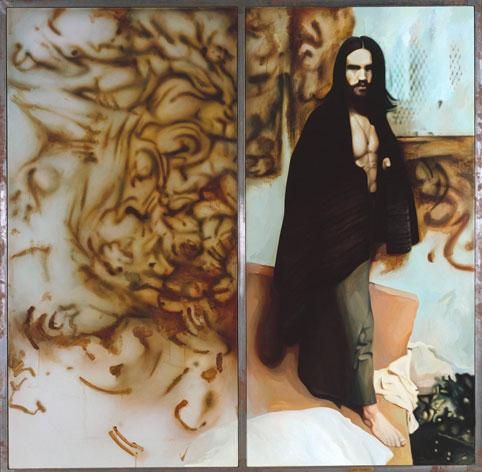
Collages such as 'The Citizen' (1981-3), also displayed at Tate Modern, dealt with the IRA and The Troubles, and were proof that Hamilton was not afraid to tackle politics as well as popular culture.
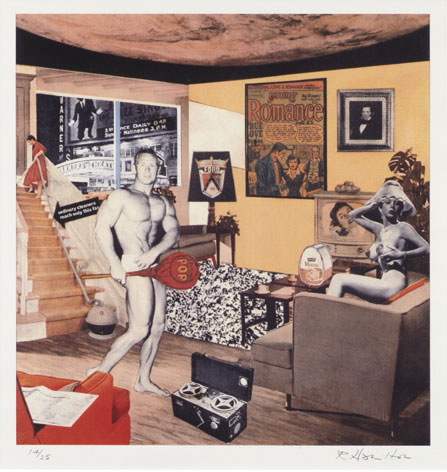
The infamous collage 'Just what is it that makes today’s homes so different, so appealing?' (1991) is also also at Tate Modern. Consisting of images lifted from mainly American magazines, it features a naked body builder in a modern sitting room and is the work in which the word ‘Pop’ first appeared, defined by Hamilton himself.
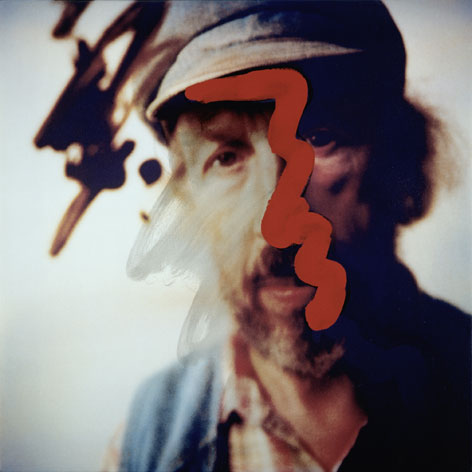
'Self-Portrait 13.7.80 a 1990', IVAM, Institut Valencià d¹Art Modern, Generalitat.
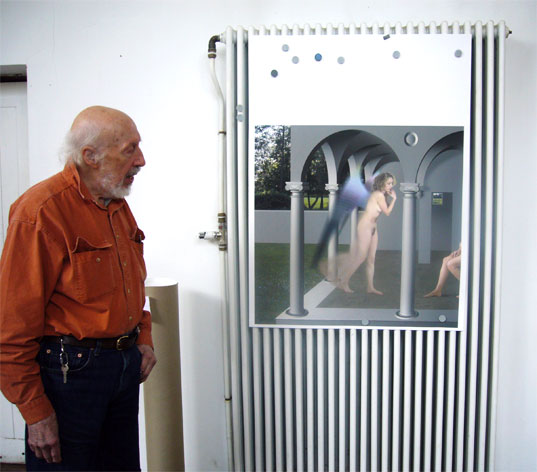
In 2007, we paid a visit to the artist and his studio in Henley-on-Thames, Oxfordshire. He is pictured here next to a test print of 'The Passage of the Angel to the Virgin'
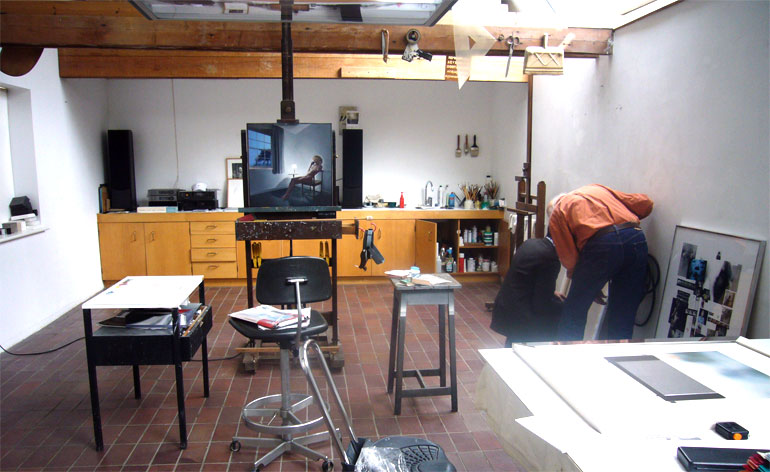
A glimpse of Hamilton's studio, who at the time was working on his painting 'The annunciation'
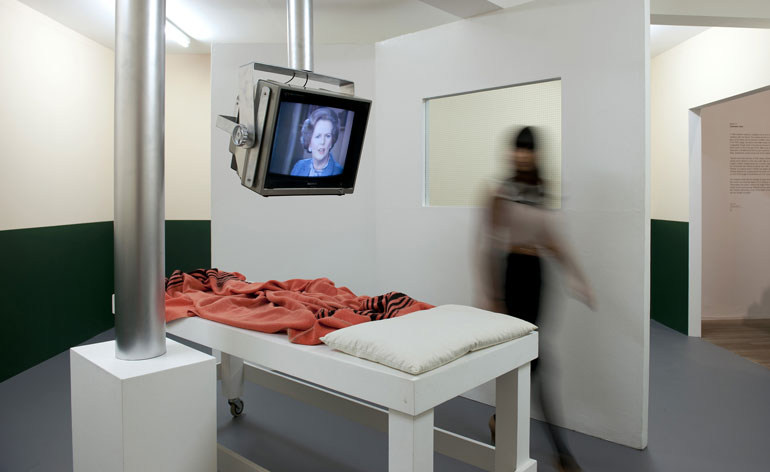
Although a painter and printmaker first and foremost, Hamilton also designed (and curated) installations, such as 'Treatment Room', 1983-4, on show at the Tate Modern. Collection of Richard Hamilton.
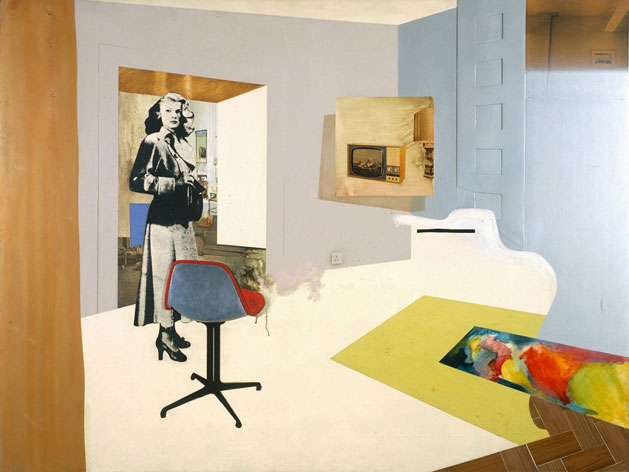
'Interior II', 1964, Tate.
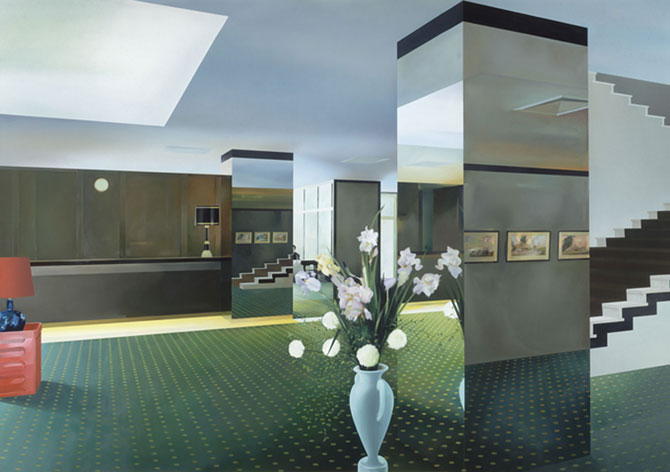
'Lobby 1985-1987', private collection.

'Swingeing London 67 (f)', 1968-9, Tate.
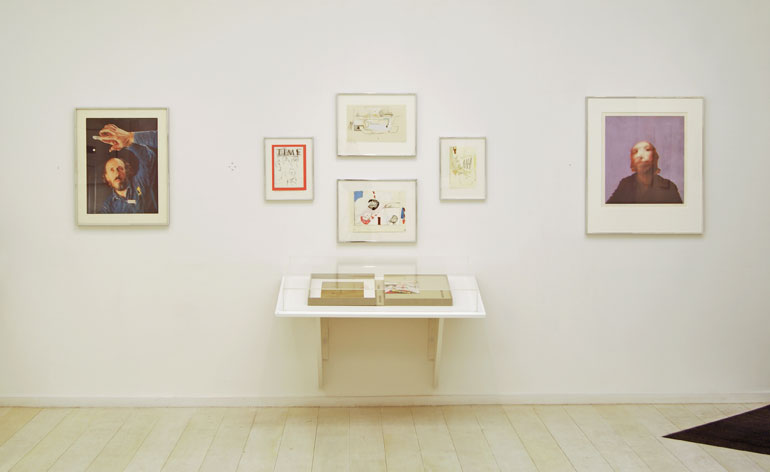
Elsewhere in London, his lifelong forays into printmaking are honoured at the Mayfair gallery Alan Cristea
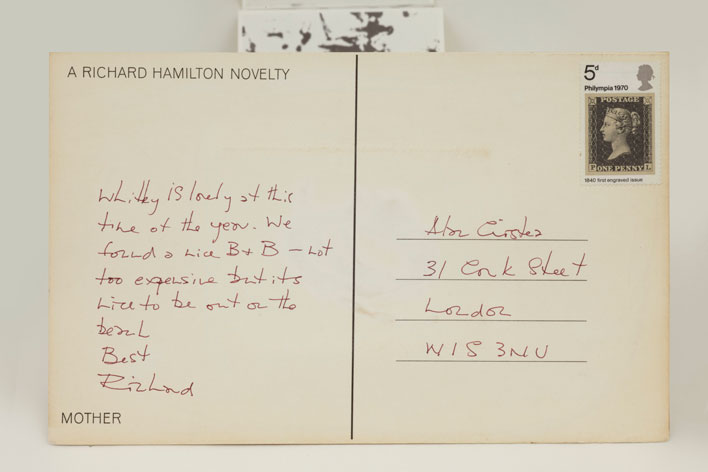
Back view of 'To mother', 1968.
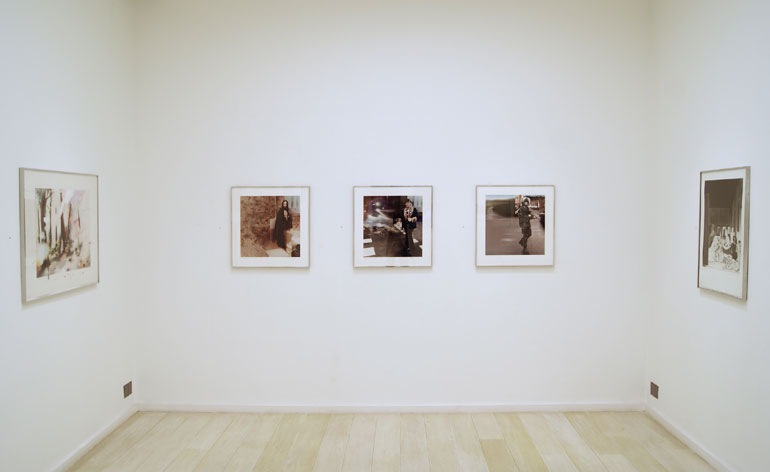
Installation view of 'Richard Hamilton: Word and Image. Prints 1963-2007' at Alan Cristea Gallery
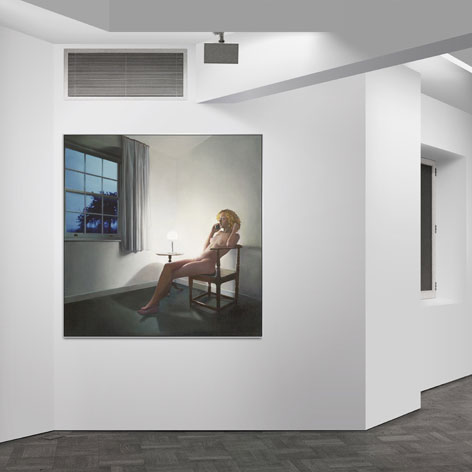
'The annunciation', 2005.
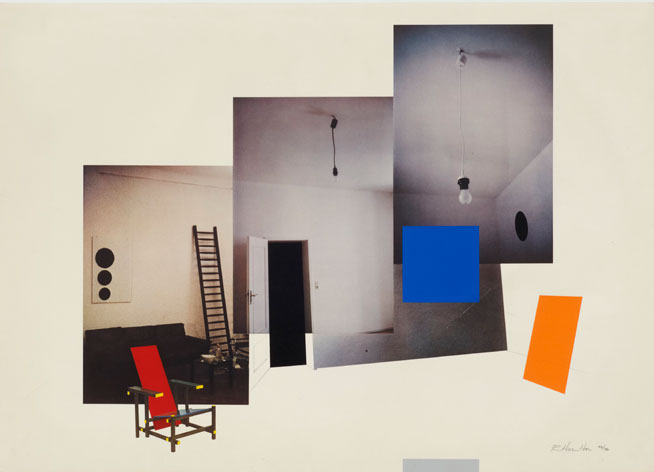
'Interior with monochromes', 1979.
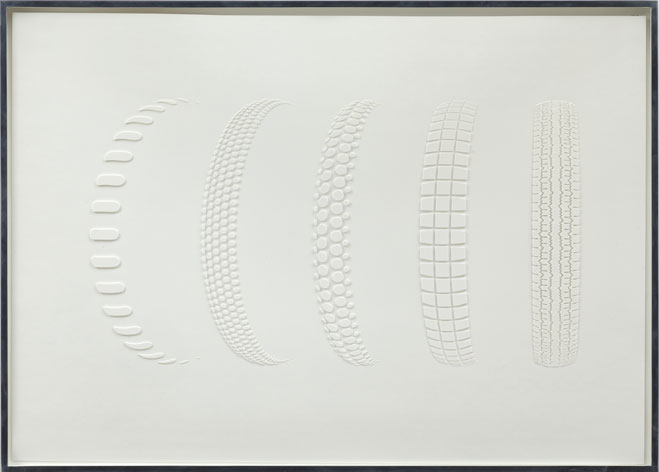
A work from 'Five Tyres remoulded (portfolio)', 1971.
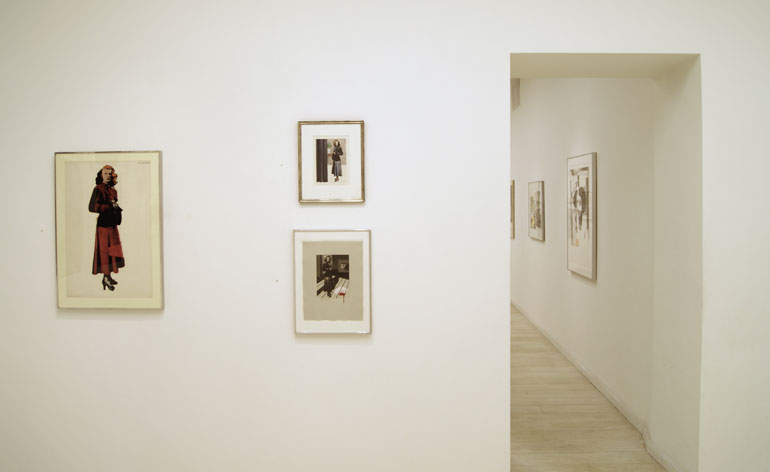
'Patricia Knight', 1964 (far left); 'Patricia Knight I (coloured)', 1982 (above right); and 'Patricia Knight III (coloured)', 1982.
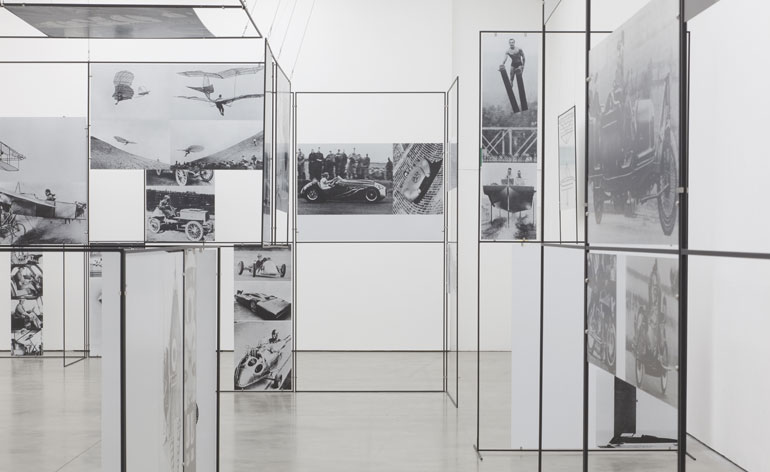
Completing the triptych of shows, The Institute of Contemporary Arts is also paying tribute to Hamilton by recreating two of his installations from the 1950s. Pictured is 'Man, Machine and Motion', which first debuted at the gallery in 1955.
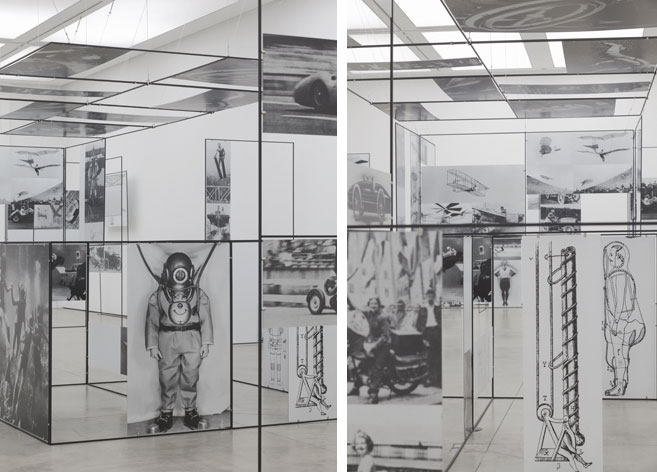
Detail shots of 'Man, Machine and Motion'.
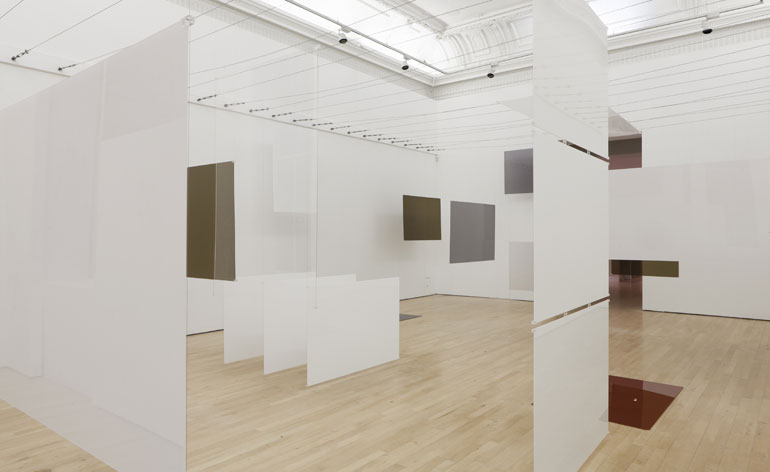
Installation view of 'An Exhibit', 1957.
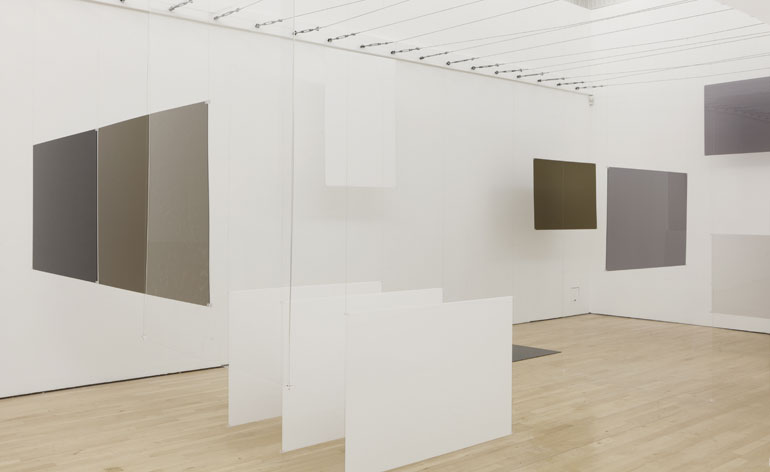
Installation view of 'An Exhibit', 1957.
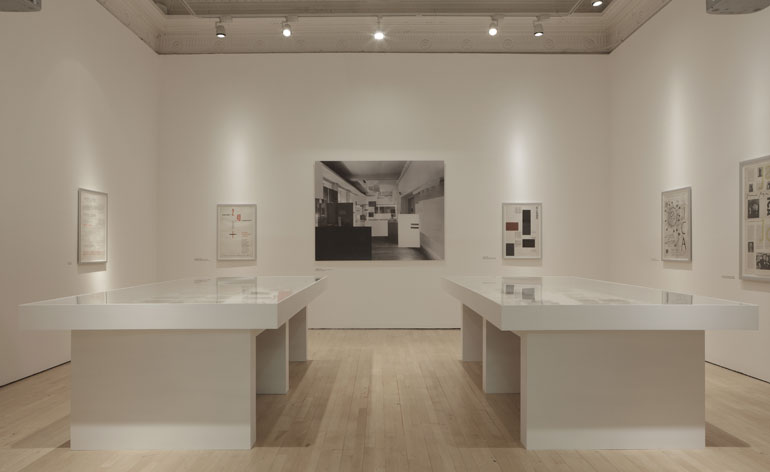
The ICA exhibition also incorporates archive imagery of the original installations, as well as private view cards and other paraphernalia, more of which can be seen at Dover Street Market, the ICA's former HQ, where it is staging a temporary take-over.
Wallpaper* Newsletter
Receive our daily digest of inspiration, escapism and design stories from around the world direct to your inbox.
Emma O'Kelly is a freelance journalist and author based in London. Her books include Sauna: The Power of Deep Heat and she is currently working on a UK guide to wild saunas, due to be published in 2025.
-
 All-In is the Paris-based label making full-force fashion for main character dressing
All-In is the Paris-based label making full-force fashion for main character dressingPart of our monthly Uprising series, Wallpaper* meets Benjamin Barron and Bror August Vestbø of All-In, the LVMH Prize-nominated label which bases its collections on a riotous cast of characters – real and imagined
By Orla Brennan
-
 Maserati joins forces with Giorgetti for a turbo-charged relationship
Maserati joins forces with Giorgetti for a turbo-charged relationshipAnnouncing their marriage during Milan Design Week, the brands unveiled a collection, a car and a long term commitment
By Hugo Macdonald
-
 Through an innovative new training program, Poltrona Frau aims to safeguard Italian craft
Through an innovative new training program, Poltrona Frau aims to safeguard Italian craftThe heritage furniture manufacturer is training a new generation of leather artisans
By Cristina Kiran Piotti
-
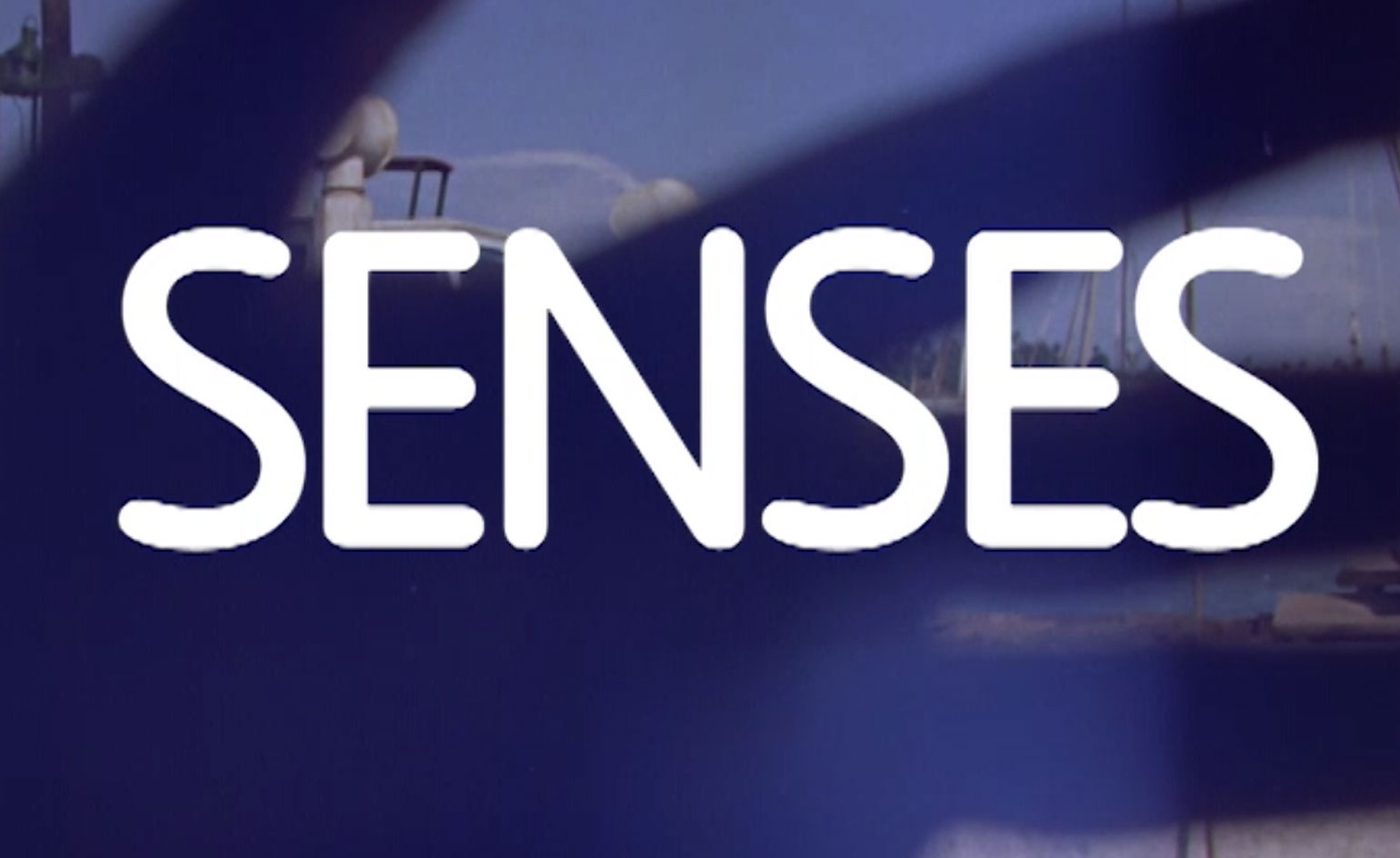 Soft touch: Flying Object brings its multi-sensory exhibition to the Tate
Soft touch: Flying Object brings its multi-sensory exhibition to the TateBy Christopher Stocks
-
 London's ICA celebrates its first permanent digs at what is now Dover Street Market
London's ICA celebrates its first permanent digs at what is now Dover Street MarketBy Rosa Bertoli